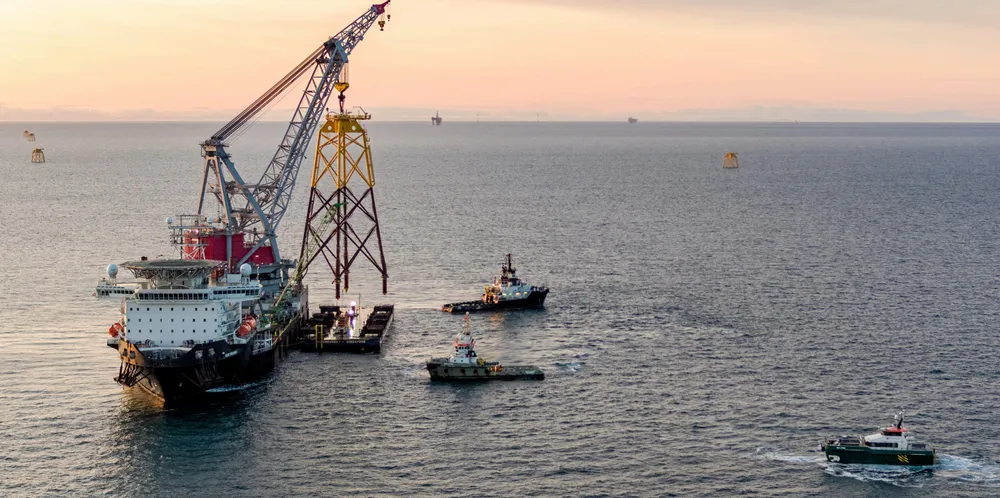Green salvation: surging renewables help oil & gas player Subsea 7 through tough year
Chief executive sees renewable energy unit delivering profits over $1bn and Ebitda margins of over 10%

Subsea 7 expects its renewables division to deliver a growing share of profits and contracts after supporting the offshore contractor’s traditional business segment through a difficult year.
The Oslo-listed oil & gas player posted a full-year loss of more than $1bn in 2020 but, while conventional and subsea umbilicals, risers and flowlines revenues of $2.58bn were 19% lower than in 2019, renewables revenues grew almost threefold to $631m.
In the fourth quarter, when the conventional and SURF business was hit by reduced activity the Middle East and Africa, renewables revenues surged to $234m, up from $54m in the same period of 2019.
Seagreen effect
A key driver behind this increase was early-phase execution of a $1.4bn engineering, procurement, construction and installation contract for Seagreen, the Total and SSE-owned 1.1GW offshore wind project in the UK sector of the North Sea.
The Seagreen project accounted for 23% of the renewables unit's revenues in the final quarter, according to Subsea 7’s chief financial officer Ricardo Rosa.
Seagreen reached 18% completion at year end, with the simultaneous fabrication of 15 jackets taking place at Lamprell shipyard in the United Arab Emirates and two other yards in China, along with fabrication of 300km of cables at Hellenic Cables in Greece.
“Seagreen is a major undertaking with a complex supply chain, but our successful track record in project and risk management is part of what differentiates us in the renewables sector,” Subsea 7 chief executive John Evans told analysts in an earnings call.
Covid-19 impact
The new renewables division registering a small net operating profit in the final quarter, compared to net loss of $26m in the same period of 2019.
Covid-19 impacts and lower project completions caused net operating income for the conventional and SURF division to decline year-on-year by a third in the fourth quarter, to $37m, despite a series of cost-cutting measures, including the retirement from the fleet of two chartered vessels.
Evans said profitability from the renewables division will continue to improve in 2021 with advances on wind farm installation projects such as Hornsea in the UK, Kaskasi in Germany and Hollandse Kust Zuid in the Netherlands.
Renewables also accounted for close to a third of Subsea 7’s $6.2bn contract backlog at the end of 2020. This included 339 wind turbine foundations to be installed between 2021 and 23, and 881kmof cables.
No spin-off
"For the moment it is clear that there is value in keeping two business together. We see the benefits of flexing our own workforce back and forth between segments.... We are also redeploying a couple of assets that might have stacked but have re-adapted for offshore wind," he said.
Evans said keeping the units together also makes sense at a time when some of Subsea 7’s traditional clients in the oil and gas sector are expanding rapidly into offshore wind.
He referred to recent moves by BP, Equinor and Total to acquire offshore wind leases in Europe and the USA.
In the shorter term, new wind farm installation contracts in the US are targeted, with companies that acquired leases over the last two years, such as Orsted and Dominion Energy, Evans added.